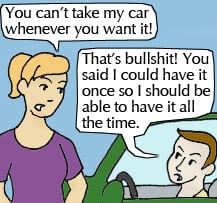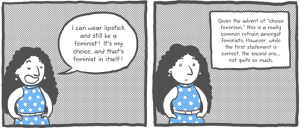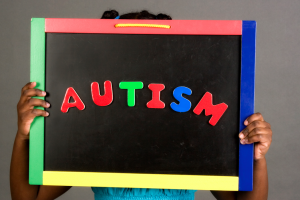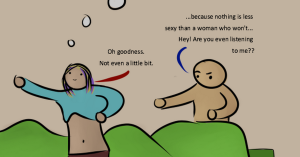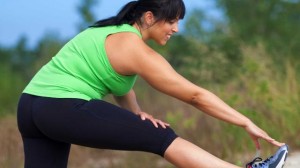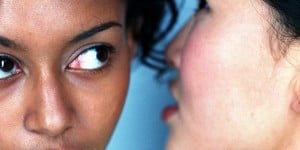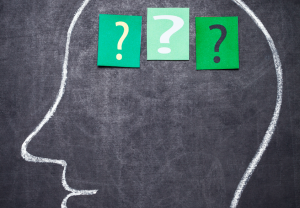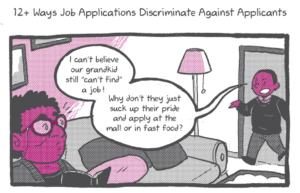Originally published on Misandry Angie and republished here with the author’s permission.
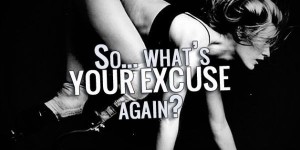 There are many different types of disability. Some are lifelong. Some are temporary, such as a cancer that someone has successfully eradicated or a high-risk pregnancy. Some involve physical pain. Some don’t. Some disabilities involve illness. Some don’t.
There are many different types of disability. Some are lifelong. Some are temporary, such as a cancer that someone has successfully eradicated or a high-risk pregnancy. Some involve physical pain. Some don’t. Some disabilities involve illness. Some don’t.
Some wouldn’t even be disabilities in a world that was structured differently, like Deafness in a world that used sign language rather than oral speech and open captions everywhere.
Some impairments can be overcome with accommodation and medication, so that treating them is a minor part of an otherwise able life. Some impairments would still be disabling even in an accommodating world, because the experience of the impairment itself is so unpleasant.
There’s one kind of disabled person that the abled world really likes: The disabled athlete.
The disabled athlete pushed boundaries, “overcomes disability,” and is often used as inspiration porn for the abled. “What’s your excuse?” they superimpose over a picture of an attractive young woman with a single lower leg prosthetic.
Disabled athletes are used (wittingly or not) as symbols of personal responsibility and determination. This fits into broader cultural ideals promoting individualism, and not accommodating disability. This is where I point out that most of the amputee athletes in these inspirational pictures are wearing prosthetic running blades that cost $15-18,000 each.
Disabled athletes are usually not ill. They may have mobility impairments or be amputees, but arthritis and Chron’s disease are not commonly associated with athletics.
What’s more, disabled athletes were very often athletes first and became disabled second.
Veteran amputees (at higher numbers due to IED usage in overseas wars) and amputees who lost limbs due to athletic endeavors like rock-climbing are among those amputees most likely to engage in sports after being fitted for a prosthetic. They already liked sports, so finding a way to do sports while disabled mattered to them.
I don’t already like sports, or at least, not as much as I like lying in a pillow nest on my bed or basking in the sunlight on my balcony.
I have chronic pain and chronic fatigue. I have less energy and less stamina than a non-disabled non-athlete woman my age.
I have about three hours of active energy per day and another eight hours of very passive energy, where I can get things done so long as I don’t have to get up to do them. Those three hours are precious and I need them for cleaning my house and running errands.
I do know it’s important that I get in some form of exercise, so I do quite a lot of leg lifts and crunches in bed. Chronic back pain for me means that lying on a hard surface like a floor or weight bench or gym mat is going to hurt before I even start to move my body.
During my three active hours, while I’m cleaning the house, I play music and dance around my apartment. I move poorly and hilariously, not gracefully or well, but I move because it matters and because dancing is a way that makes moving feel good for me.
For other disabled people, running is what feels good. Or playing wheelchair basketball. Or beep ball, baseball for the blind. Some people need to move their bodies a lot each day to feel good. Some of us need to keep our bodies relatively still and concentrate on getting lots of rest.
Some find exhilaration in competition and pushing their bodies to meet new goals. Some of us are just glad when there are fewer than twelve bathroom trips in the day.
Neither experience of disability, ill or well, is a reflection on the person. They’re just different, like us and our disabilities.
[do_widget id=’text-101′]
Angie Jackson is a queer disabled single mom, writing about social justice issues and cults at Misandry Angie.
Search our 3000+ articles!
Read our articles about:
Our online racial justice training
Used by hundreds of universities, non-profits, and businesses.
Click to learn more
Most Read Articles
- « Previous
- 1
- …
- 30
- 31
- 32





